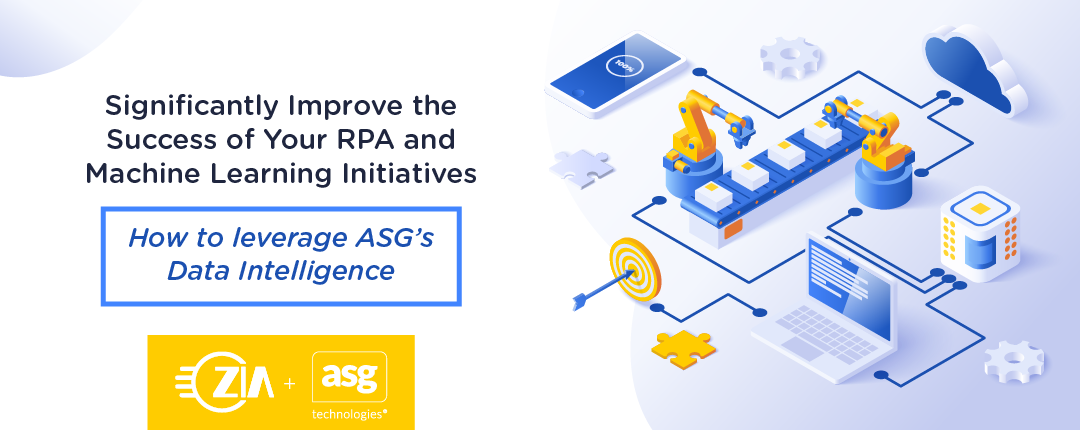With data becoming increasingly more ubiquitous, today’s enterprises require more intelligent ways of capturing, tracking, and analyzing customer data. Technologies such as robotic process automation (RPA) and machine learning are no longer just discussed in research papers and labs. They are extensively applied in real-life applications. Even the most practical use cases of RPA and machine learning in the enterprise need an understanding of the breadth and depth of data managed through the organization.
In the most basic sense, we could think of RPA as automating manual data entry. However, more complex applications, such as automating analysis of insurance risk or healthcare diagnoses require comprehensive datasets. In these cases, the benefits are much more extensive than simple cost savings. They lead to better use of highly skilled employees, and provide analysis for faster decisions and actions. By taking over rote tasks, machine learning in the enterprise frees up skilled people to focus on achieving higher levels of quality and efficiency.
To succeed and scale with automation and machine learning, it’s important to remember that these models are only as good as the data they ingest. Starting without relevant and high-quality data can lead to difficulties such as inaccurate insights or inherent bias. Using ASG’s Data Intelligence tools and applying the following principles can enable organizations to leverage information to derive better value from robotic process automation (RPA) or machine learning initiatives.
Understand your business priorities
When building an enterprise data management strategy, it’s critical to understand the business’s goals. In healthcare, doctors aim to improve diagnosis and therapeutic monitoring by providing personalized recommendations to patients. An online retailer may plan to use machine learning to create more-effective targeted marketing campaigns. An insurance company may build machine learning systems to predict underwriting risk. Establishing which of a business’s strategic priorities have the best potential to be advanced using intelligent data provides clarity around which data sets are most important to collect, store, and prepare for analysis. Once business priorities are known, a tool such as ASG’s Data Intelligence can be used to automatically discover the relationships between data sets and specific business processes.
Create and maintain a comprehensive view of all data assets
For data to be useful, a business must know how and where it exists. Nearly every organization today has legacy systems. Silos of duplicate, unidentified, or untagged information are the results of poor data management. ASG’s Data Intelligence tool specifically assists with creating a data inventory. This helps companies know the breadth and depth of data being collected and managed throughout the organization. ASG describes the data lineage feature as end-to-end data visibility of critical data elements. This is powerful in understanding the flow of data. We can see where it starts or originates, to where it gets used, and further downstream where it is manipulated or transformed.
In addition, truth in data is always evolving. For example, in healthcare, new diseases, mutations of viruses, and diagnoses continuously change data sets required for learning models. With insurance new quantifiable data factors are constantly needed to develop profiles of insurance risk. Using a data intelligence tool such as this ultimately leads to greater data discovery, transparency, and availability.
Lay the groundwork for data governance
You may have heard the term “Data Stewardship.” This refers to the day-to-day operational activities of managing and resolving data issues. Many roles in the organization are working on creating or using the data. A set of rules and systems is behind that for data governance that confirms the data the enterprise uses can be found, understood, shared, trusted, analyzed, and used appropriately. Data governance focuses on guaranteeing data truth. It supports data privacy, ensuring data quality, and setting the guardrails for data change management.
Without a proper data strategy in place, machine learning initiatives fail to scale. Worse yet, if the machine learning models are informed by bad data, the results they generate may be misleading or incorrect. Therefore, investing in data management strategy and tools are the foundational place to start. This infographic from ASG shows how to realize the full value from your data.
Contact us if you’d like to learn more about Data Intelligence from ASG or to chat with us about your data strategy journey.

